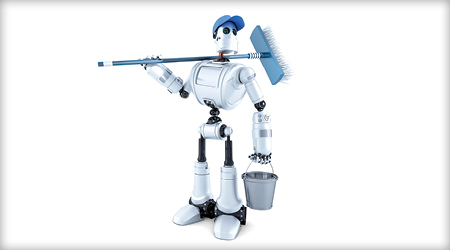
Over the past two decades, equipment manufacturers have attempted to bring floor cleaning robots to the market. On display at myriad trade shows, cleaning a stretch of flooring by itself, the equipment attracted curious crowds of distributors and facility cleaning providers, alike. But just as quickly as the excitement began to build around the machines — promising to upend the cleaning industry — they just as quickly faded into obscurity.
Early versions of autonomous floor equipment couldn’t live up to the hype. The machines broke down, got stuck in corners, and provided cleaning levels that were at, or below, subpar. With a price tag set in the tens of thousands of dollars, many building service contractors and custodial departments simply couldn’t afford the purchase risk.
The equipment was nice in theory — but nowhere near worth the hassle or the high cost.
“A lot of the machines ended up in Dumpsters,” says Glen Huizenga, a sales leader at Nichols, Norton Shores, Michigan. “Then, they kind of went away for a while. They didn’t have the technology (back then) that could make it effective.”
That’s not true anymore. Following years of R&D both within and outside of the cleaning industry, the machines have made incredible headway.
Advancements in battery life, GPS navigation, artificial intelligence and motion-sensor technology have placed the machines in a position of near autonomy — save for the times cleaning solution needs to be refilled, batteries recharged, or the machines need to be rerouted or serviced.
Now, the robotic cleaning industry is projected to become a $2.5 billion business by 2020, according to a study by Markets and Markets. Unmanned floor cleaning machines are expected to make up the largest and fastest growing category. In fact, autonomous scrubbers are already quietly humming along in various airports, hospitals and office complexes across the country.
The robots have arrived.
Selling Floor Cleaning Robots

 Celebrating BSCAI's 60th Anniversary eBook
Celebrating BSCAI's 60th Anniversary eBook The Down and Dirty on Cleaning in Virus Season
The Down and Dirty on Cleaning in Virus Season How Surfactant Use is Expanding in Commercial Cleaning
How Surfactant Use is Expanding in Commercial Cleaning